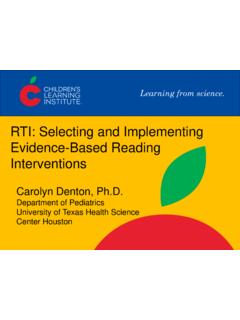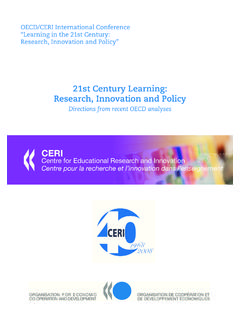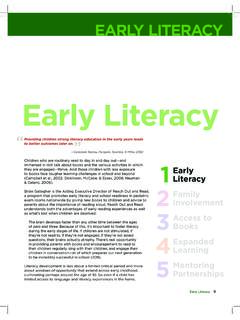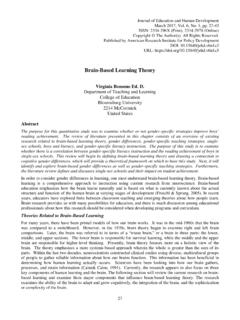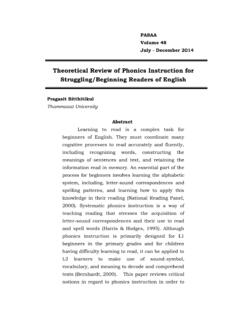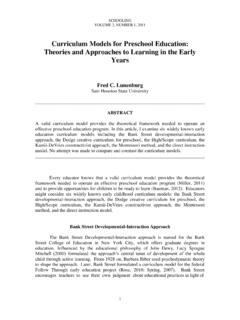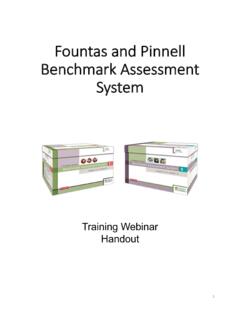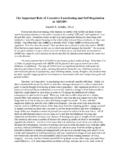Transcription of INTENSIVE INTERVENTIONS FOR STUDENTS STRUGGLING …
1 INTENSIVE INTERVENTIONS FOR STUDENTS STRUGGLING IN reading AND MATHEMATICSA Practice GuideSharon VaughnThe University of Texas at AustinJeanne WanzekFlorida State UniversityChristy S. MurrayGreg RobertsThe University of Texas at Austin INTENSIVE INTERVENTIONS FOR STUDENTS STRUGGLING IN reading AND MATHEMATICSA Practice GuideThis publication was created by the Center on Instruction, which is operated by RMC Research Corporation in partnership with the Florida Center for reading Research at Florida State University; Instructional Research Group; Lawrence Hall of Science at the University of California, Berkeley; Texas Institute for Measurement, Evaluation, and Statistics at the University of Houston.
2 And The Meadows Center for Preventing Educational Risk at The University of Texas at authors acknowledge the editorial and production support provided by Angela Penfold, C. Ralph Adler, and Robert Kozman of RMC Research development of this document was supported by the Department of Education, Office of Elementary and Secondary Education and Office of Special Education Programs, under cooperative agreement S283B050034. However, these contents do not necessarily represent the policy of the Department of Education, and you should not assume endorsement by the Federal citationVaughn, S.
3 , Wanzek, J., Murray, C. S., Roberts, G. (2012). INTENSIVE INTERVENTIONS for STUDENTS STRUGGLING in reading and mathematics: A practice guide. Portsmouth, NH: RMC Research Corporation, Center on Instruction. Copyright 2012 by the Center on Instruction at RMC Research CorporationTo download a copy of this document, visit 3 PREFACE 5 OVERVIEW 7 INTRODUCTION 9 SUPPORTING COGNITIVE PROCESSING 9 Research on learners with cognitive processing difficulties 14 IN THE CLASSROOM: Integrating executive functions and self-regulation into academic teaching for STRUGGLING students17 INTENSIFYING INSTRUCTIONAL DELIVERY 17 Explicit instruction 18 Systematic instruction 18 Opportunities for student response and feedback 20 IN THE CLASSROOM: Intensifying instructional delivery for STRUGGLING students22 INCREASING LEARNING TIME 25 IN THE CLASSROOM: Increasing instructional time for STRUGGLING learners27 REDUCING INSTRUCTIONAL GROUP SIZE 29 IN THE CLASSROOM.
4 Reducing group size for STRUGGLING students31 CONCLUSION33 RECOMMENDATIONS FOR FURTHER reading 33 Resources from the Center on Instruction 34 Resources from other organizations35 REFERENCES43 APPENDIX 44 EXAMPLE LESSONS 45 Example lesson 1: Less explicit vs. more explicit instruction 47 Example lesson 2: Less systematic vs. more systematic instruction 50 Example lesson 3: Fewer opportunities vs. more opportunities for response and feedback13 PREFACET eachers, administrators, and policy-makers across the country need materials that address today s problems and initiatives.
5 COI and its authors select topics and promote practices that have direct relevance to the urgent concerns and priorities of contemporary educators. For example, states seeking more rigorous college and career-ready standards such as those in the Common Core State Standards need guidance for implementation, including specific strategies and INTERVENTIONS to support English language learners and STUDENTS with special needs. Schools implementing School Improvement Grants (SIGs) look for guidance on meeting the needs of diverse learners and using data to inform instructional decisions.
6 Schools extending learning time need guidance on maximizing the use of instructional time. This publication on INTENSIVE INTERVENTIONS can inform the design, delivery, and use of evidence-based INTERVENTIONS with STUDENTS , including those with disabilities and those who struggle with mastering today s rigorous reading , literacy , and mathematics standards. It can also promote the continuous use of student data to differentiate instruction an essential practice for meeting each student s individual needs and raising the academic performance of a authors invite you to consider and implement these practices.
7 Both for their value in meeting the goals of current initiatives such as SIG and Common Core State Standards and for the long-term strength of your educational publication provides research-based guidance for intensifying instruction in reading and mathematics for STUDENTS with significant learning difficulties, including STUDENTS with disabilities, in kindergarten through grade 12. The guide gives technical assistance providers and states information reflecting best practices for implementing INTENSIVE INTERVENTIONS to improve education practices for STRUGGLING STUDENTS , including those who receive special education.
8 It can also be used as a resource for instructional specialists and special education teachers who are searching for broad guidelines on the design and delivery of INTENSIVE those goals in mind, we present a brief review of the research on intensifying instruction for STRUGGLING STUDENTS . Specifically, we discuss: integrating strategies that support cognitive processes ( , self-regulation and memory) with academic instruction and aligning this instruction with learner needs, differentiating instructional delivery by making it more explicit and systematic and by increasing opportunities for feedback, increasing instructional time, and reducing group guide includes the following resources.
9 Practice guidelines (in the form of questions and answers) that can inform the design and delivery of INTENSIVE INTERVENTIONS , example lessons (see the Appendix) that illustrate the intensification of key areas of instructional delivery ( , making lessons more explicit and systematic and increasing the opportunities for student response and feedback), and a list of resources for further reading and extended this guide is not a comprehensive review of the literature, it does offer guidelines for instructional decision-makers on adapting and modifying instructional practices to deliver appropriate, responsive instruction for STUDENTS with learning often encounter challenges when delivering effective instruction to STUDENTS with significant learning difficulties.
10 Typically, we address the learning needs of such STUDENTS in two fundamental ways: we examine ways to provide systematic and differentiated instruction within core reading and mathematics, and we provide INTENSIVE INTERVENTIONS to ensure that these STUDENTS receive the targeted instruction needed to accelerate their reading and mathematics purpose of this guide is to discuss considerations for providing INTENSIVE intervention to STUDENTS with significant learning difficulties, including those with learning disabilities, in reading and instructionEducators must weigh several considerations when providing an INTENSIVE instructional program for STUDENTS with significant learning difficulties, and in this guide, we discuss four such considerations.










